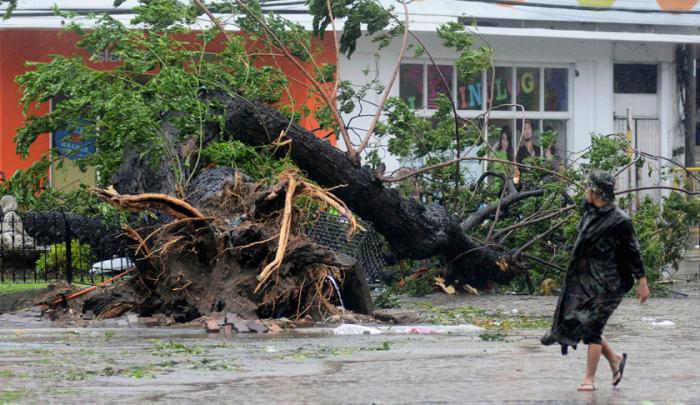Highlights
- World Vision staff still unreachable in hardest hit province of Leyte
- Staff reports seeing “billboards flying around like kites”
- Organization working with local government to asses damage and begin response

MANILA, Philippines (November 8, 2013) — As Typhoon Haiyan continued to make its way west across the Philippines Friday, World Vision expressed concern that what was shaping up to be the Philippines’ strongest typhoon of the year could leave a path of “vast destruction” in its wake.
“This storm was much stronger than Typhoon Bopha last year, and that storm killed more than 1,000 people and destroyed at least 216,000 homes,” said Minnie Portales, Director for Public Engagement with World Vision in the Philippines. “As we wait for early reports from some of the hardest-hit provinces, we fear for the worst. This could be very bad.”
As of 11 a.m. local time, World Vision has been unable to reach staff in Tacloban City, Leyte Province, Philippines. The storm cut a deep path through the province, and emergency officials are working to determine the extent of the damage.
According to local reports, storm surges of nearly 16 feet were reported, power is out, and the area is flooded. Landslides are a concern in the mountainous areas near the city as well.
Mary Ann Zamora, an Emergency Communications Officer with World Vision based in Cebu, Philippines said from her vantage point, “We could see billboards flying around like kites, and the wind was whistling through the trees. Rain continues to pound us here.”
World Vision emergency staff are based throughout the country and are working closely with national and local government disaster response teams to assess the damage and begin a response as soon as possible. The biggest challenge for storm survivors will be emergency food and potable water. Rebuilding will also be difficult as much of the farm land has been destroyed in the storm.
Before Haiyan, the aid agency was still actively responding to last month’s earthquake in Bohol, distributing relief supplies to 7,000 families.
“There are still many displaced families from the earthquake staying in makeshift tents, and we’re still experiencing aftershocks, said Aaron Aspi, World Vision Emergency Communications Specialist based in Bohol. “People are afraid of enclosed spaces because of the aftershocks and some are riding out the storm from their tents. It’s hard to see them struggling in this storm while they still try to recover from the quake.”
This has been an active hurricane season for the region, and forecasters predict the Philippines may see another two or three major storms before the season ends in January.
Affected families need food, water, non-food and hygiene kits at the evacuation centers. The local government is trying to assist the immediate needs at the evacuation centers. World Vision teams will be dispatched to Eastern and Central Visayas to closely assess the impact rendered by Typhoon Haiyan.
– END –
About World Vision:
World Vision is a Christian humanitarian organization conducting relief, development, and advocacy activities in its work with children, families, and their communities in nearly 100 countries to help them reach their full potential by tackling the causes of poverty and injustice. World Vision serves all people regardless of religion, race, ethnicity, or gender. For more information, please visit www.WorldVision.org/media-center/ or on Twitter @WorldVisionUSA.